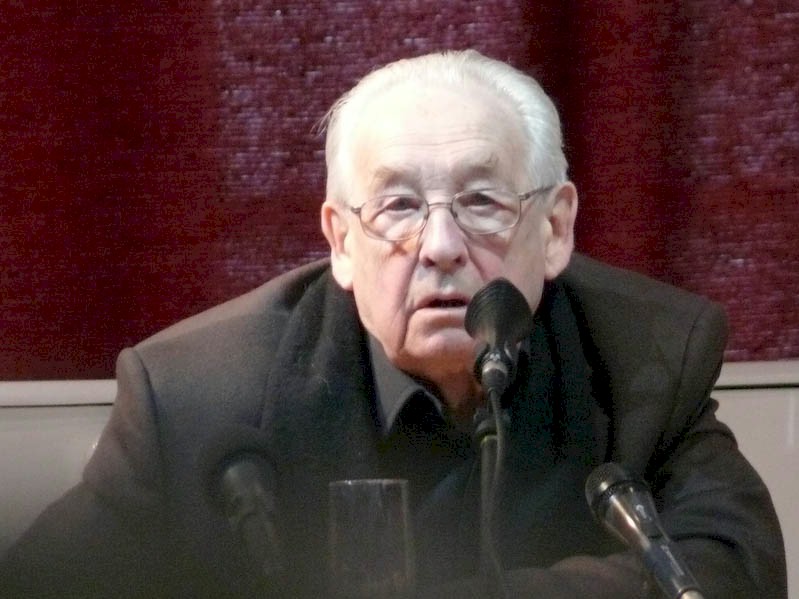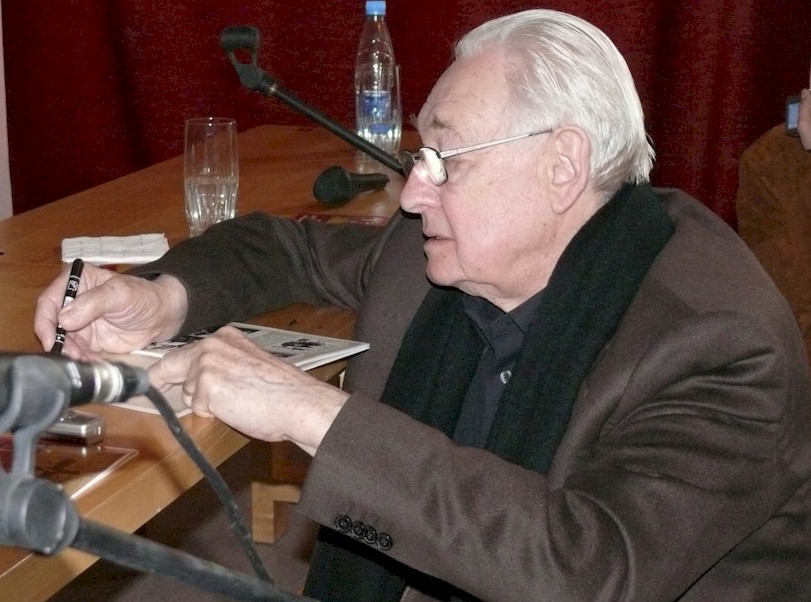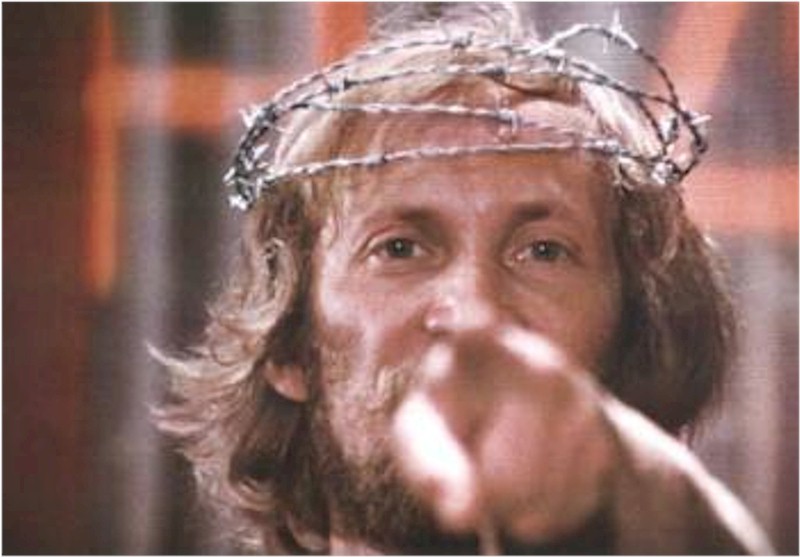Pilatus und Andere - Andrzej Wajda
English > Adaptations > Films > Feature films > Andrzej Wajda
It is often said that the film Pilatus und Andere by the Polish director Andrzej Wajda (1926-2016) was the first screen adaptation of The Master and Margarita. We can't agree with this, though. Two years earlier, in 1970, the Finnish film director Seppo Nyyrö Wallin (1928-2003) had already made Pilate, a film based on the biblical chapters of the novel.
Wajda's movie movie Pilatus und Andere, which also only tells the biblical story of The Master and Margarita - be it in a contemporary setting -, was broadcasted by the German television channel ZDF on March 29, 1972. To my knowledge, it hasn't been released on DVD or casette. It's known under two more titles: Pilat i inni and Ein Film für Karfreitag. This movie picture was shown again at the Berlin Film Festival on February 15, 2006, when director Wajda received an Honorary Golden Bear.
On his website director Wajda comments this film as follows:
I wasn't satisfied with the first two versions of the script which I had commissioned in Warsaw.
At the time Bulgakov's novel Mistrz i Malgorzata [The Master and Margaret] was first published in Poland. I was very happy with it. I realized that I would not find a better text for the film than the story of Pilate. Everything was there: Christ, Pilate's dark intrigue, Judas' betrayal and the desperate loneliness of the single disciple and Evangelist.
I cast Polish actors in all the parts in the film except two, which were played by Germans. I also chose the location for Pilate's palace. Initially, it was to be a strange, ruined building on the hill over Kassel - the water works for the palace fountains built by Huguenots exiled from France; my instinct, however, told me that I needed something contemporary. This is how I landed in Nuremberg, where I saw, for the first time, the ruins of the Third Reich. This pseudo-Rome was an ideal setting for Pilate, providing an ironic commentary on the short history of the allegedy thousand year Reich, whose quick collapse I saw with my own eyes.
Shooting on the platform, from which Hitler had delivered his speeches during the Nuremberg rallies of the Nazi party, was a particularly moving event for us. We belonged to those Slavic nations which were to be destroyed in order to make the Drang nach Osten possible. And here we stood, alive and well, on the ruins of the Third Reich, making a film! During those weeks I felt I really was a free man. I have never forgotten that personal and creative freedom.
I placed the scene of Calvary at a dump near a motorway entering to the city. This is how all sites of torture must have looked in ancient times, since their main goal was to frighten the people. I remember well two public executions during the Nazi occupation. Both took place at the entrance to the city, near big factories employing thousands of workers who, on their way to work and back, had to pass by the gallows standing by the roadside.
In the film, I showed tourists who crowded at the coach windows to catch a glimpse of an execution. But a modern motorway has a will of its own: the road signs, which forbid vehicles to stop, solve the moral problem. If we had nailed a man to the cross with real nails, their reaction would have been the same. What can one do for a suffering man, how can one help him, if the coach cannot stop anyway? I believe the film conveyed the sadness of the indifference and loneliness of death.
During the shooting of Pilate and Others Andrzej Lapicki was our mentor not only owing to his perfect knowledge of German. I believe he had the best feeling for the historical paradox which allowed us to make such a strange film in Germany.
It all began with the costumes. Afranius, Pilate's secret agent played by Lapicki, had to have a contemporary costume. I told Andrzej to take some money from the production office, go to a department store and buy some ordinary clothes. A few hours later he came to show me what he had bought. I was delighted: anyone could recognize that the grey overcoat and nondescript hat shrouded a secret police agent. My impression was confirmed soon; a few days later we shot some scenes in a city hothouse. Andrzej was sitting on a bench, his overcoat unbuttoned, warming himself in the sun. Under his jacket one could see a holster and a pistol. Suddenly, a couple of passersby approached him: «Some Poles are making a film over there». «Yes, of course. I know», replied Lapicki. They said: «You'd better keep an eye on them!».
Feature films
- Introduction
- Michael Lockshin - 2022
- Nikolai Lebedev - 2020
- Baz Luhrmann - 2017
- Charlotte Waligòra - 2017
- Stone Village Productions - 2012
- Giovanni Brancale - 2008
- Ibolya Fekete - 2005
- Sergey Desnitsky - 1996
- Yuri Kara - 1994
- Paul Bryers - 1992
- Oldřich Daněk - 1991
- Andras Szirtes - 1990
- Vladimir Vasilyev - Boris Yermolaev - 1986
- Aleksandar Petrovic - 1972
- Andrzej Wajda - 1972
- Seppo Wallin - 1970
Other film genres
The movie
Click here to watch the full movie, dubbed in Russian.
Pilatus und Andere [ru]
Censorship
Andrzej Wajda found the following note in The Black Book of Censorship:
13.2.1975. Do not allow the publication of a-ny materials, reviews, comments or articles on A. Wajda's film Pilate and Others or all demands for its widespread distribution. The only information which can be published is the repertoire of a given studio theatre, inclu-ding this film. This instruction doesn't apply to publications in the specialist film magazi-nes, which require only the elimination of possible demands for widespread distribu-tion.
(Nullified 16.6.1975)


